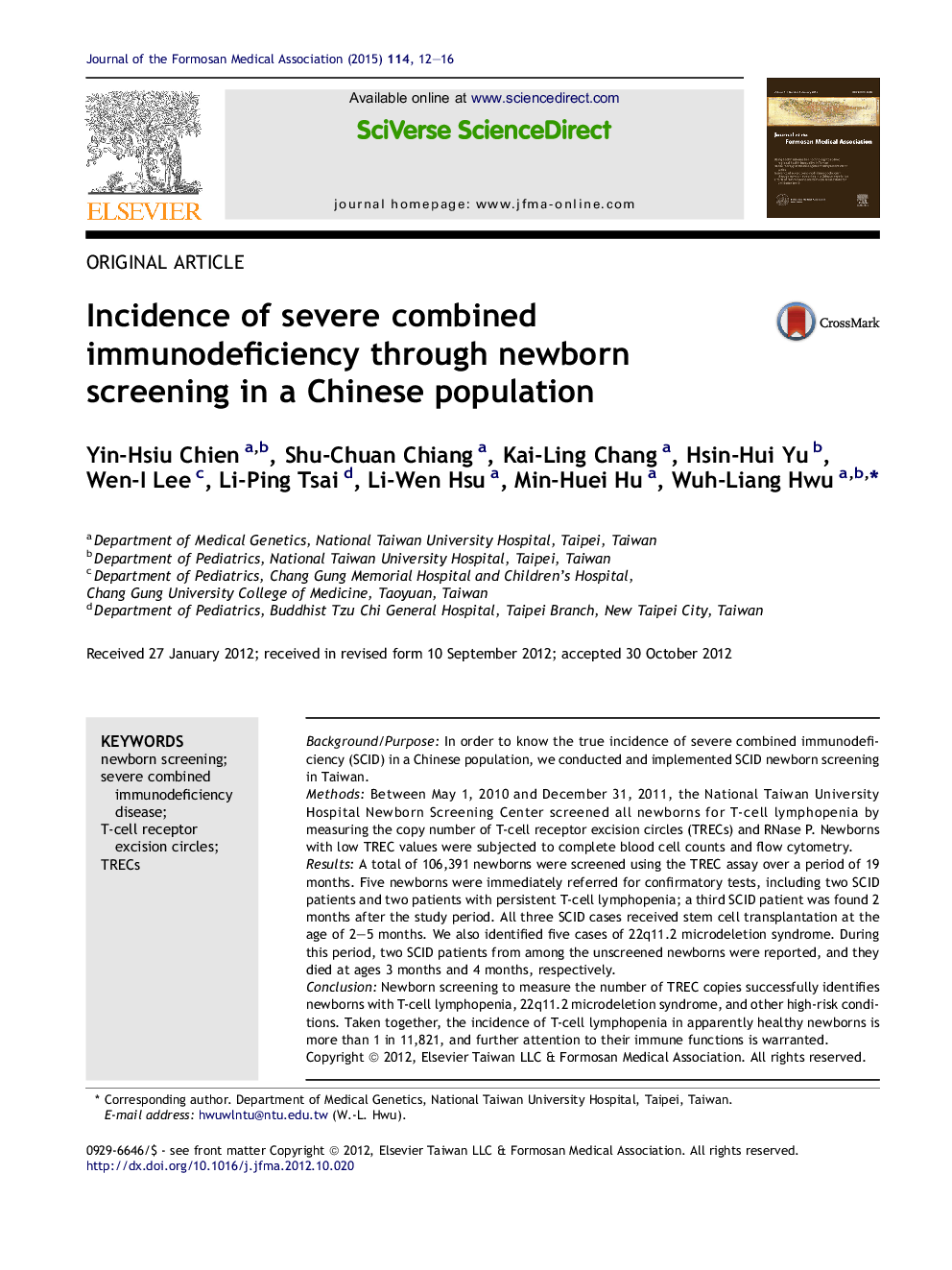| Article ID | Journal | Published Year | Pages | File Type |
|---|---|---|---|---|
| 3478564 | Journal of the Formosan Medical Association | 2015 | 5 Pages |
Background/PurposeIn order to know the true incidence of severe combined immunodeficiency (SCID) in a Chinese population, we conducted and implemented SCID newborn screening in Taiwan.MethodsBetween May 1, 2010 and December 31, 2011, the National Taiwan University Hospital Newborn Screening Center screened all newborns for T-cell lymphopenia by measuring the copy number of T-cell receptor excision circles (TRECs) and RNase P. Newborns with low TREC values were subjected to complete blood cell counts and flow cytometry.ResultsA total of 106,391 newborns were screened using the TREC assay over a period of 19 months. Five newborns were immediately referred for confirmatory tests, including two SCID patients and two patients with persistent T-cell lymphopenia; a third SCID patient was found 2 months after the study period. All three SCID cases received stem cell transplantation at the age of 2–5 months. We also identified five cases of 22q11.2 microdeletion syndrome. During this period, two SCID patients from among the unscreened newborns were reported, and they died at ages 3 months and 4 months, respectively.ConclusionNewborn screening to measure the number of TREC copies successfully identifies newborns with T-cell lymphopenia, 22q11.2 microdeletion syndrome, and other high-risk conditions. Taken together, the incidence of T-cell lymphopenia in apparently healthy newborns is more than 1 in 11,821, and further attention to their immune functions is warranted.
